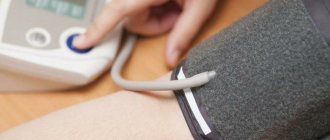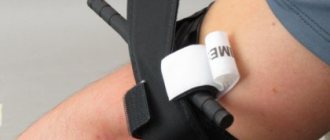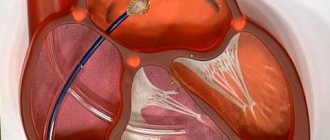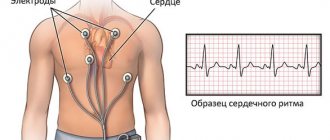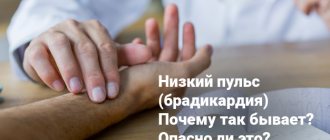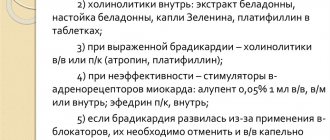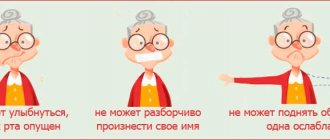In general, the effect of low pressure on the heart is expressed in the inability of the blood transporting organ to fully perform its functions. As a result, hypotension occurs - one of the common pathological conditions of the cardiovascular system.
Low blood pressure can occur against the background of the development of vegetative-vascular dystonia, heart disease, stomach disease, as well as with large blood loss, the presence of a number of psychological painful conditions (depression, insomnia and others).
The International Center for Health Protection sees experienced cardiologists who can solve even complex problems. You can make an appointment by calling
The main manifestation of hypotension is a deterioration in the intensity of blood flow in peripheral blood vessels. As a result, the supply of oxygen and other useful components of the blood to the organs is disrupted.
In addition to pronounced clinical manifestations, this pathological condition is dangerous due to the development of various complications. It is especially important to monitor blood pressure in the case of diagnosing renal and cardiac pathologies. This circumstance may be a consequence of the development of a number of other pathological conditions. However, such predictions are only possible for special heart conditions.
For what reason can a person have a slow pulse and low blood pressure?
Hypotension (a decrease in blood pressure less than 90/60 mmHg) is most often caused by either a decrease in the tone of the vascular walls or a decrease in the amount of circulating blood. The addition of bradycardia (pulse less than 60 beats per minute) to this condition is typical for the following population groups:
People who engage in physical activity. The heart obeys the laws of physics, like everything else around it, so when a large amount of blood is released at once, the pulse and pressure increase. As a result of prolonged stress, a condition such as bull's heart (an increase in the size of the organ) can occur, which is very typical for professional athletes. Pathological changes in its form can lead to death, because of this, people who have been diligently involved in sports cannot afford to abruptly quit training, since the vascular system has already adapted to heavy loads.- Elderly patients. Over the years, our body weakens, so there may be a decrease in blood output from the myocardium due to heart failure.
- Those who have suffered hypothermia. Low temperatures adapt our body to reduced oxygen consumption, so the rhythm slows down and the pulse rate decreases. But most often this condition is temporary and goes away with warming of the environment.
- Pregnant women. Pregnancy is a restructuring of the body and chronic stress for it. An enlarged fetus or an unsuccessful sleeping position can lead to a deterioration in health, for example, when the inferior vena cava (which is located on the right side of the chest) is compressed, pressure and pulse decrease. Therefore, lying on the right side is not recommended in late pregnancy. In addition, bradycardia with hypotension may be associated with oxygen starvation of the mother, which negatively affects the development of the fetus.
- Patients with cardiovascular diseases. Low blood pressure and a rare (low) heartbeat may indicate certain pathologies:
- congenital heart defects in children;
atherosclerosis, inflammation (myocarditis), ischemia or post-infarction cardiosclerosis in adults.
- Patients with poisoning. A side effect of some drugs or chemicals is a decrease in blood pressure and pulse. Particular attention should be paid to potassium cyanide, phosphates, beta blockers and other antihypertensive tablets, as well as intoxication due to viral hepatitis, sepsis or uremia.
- People with thyroid dysfunction. Hypothyroidism (decreased organ function) leads to hypotension and bradycardia, which distinguishes it from hyperthyroidism, which is characterized by tachycardia. To diagnose this disease, it is necessary to monitor the level of thyroid hormones.
In patients with hypertension after coronary artery bypass grafting (CABG), transient hypotension is possible, which may affect the management of the postoperative period.
Surgical treatment of bradycardia
If conservative treatment in elderly and young people does not lead to an improvement in hemodynamic parameters, then indications for installing a pacemaker arise.
The pulse is usually measured on the radial artery, although it can be on any large, superficially located
First aid and further actions for a patient with bradycardia and hypotension
The algorithm of action depends on the frequency of occurrence of symptoms, their intensity and the cause of low blood pressure and frequent low pulse. Typical clinical picture: headache, dizziness, drowsiness in the middle of the day, loss of consciousness, nausea; Vomiting, cold sweat, shortness of breath, and swelling may occur.
Treatment primarily depends on the severity of the symptoms. This can be found out by visiting a doctor. The range of possible diagnostic procedures includes anamnesis, objective examination (measurement of pulsation, pressure, assessment of the state of the cardiovascular system), general tests (possible anemia, which is manifested by a lack of hemoglobin and red blood cells), ECG, Holter monitoring, chest x-ray and additional studies depending on comorbidities.
If this condition does not cause much discomfort, you can take a cup of strong green tea for low blood pressure and low pulse. This increases blood pressure and tones blood vessels. A variety of tinctures have a positive effect: ginseng, belladonna, eleutherococcus.
For chronic cases, medications are used: Citramon, Zelenin tincture.
There is a special conduction system in the heart that ensures the excitability and automaticity of the heart. Contractions above 60 times per minute are provided by the sinus node (which normally plays the role of a first-order pacemaker). When it weakens, the underlying structures perform the pacemaker function, which contributes to bradycardia. For this pathology, surgical intervention and installation of an electrical pacemaker are adequate, which ensures the heart rate at the required level.
You should not forget to monitor your pulse and blood pressure during an attack, since a decrease in heart rate (HR) below 40 is fraught with cardiac arrest, so readings less than 50 or resistance to home treatment are indications for calling an ambulance.
Critical conditions that may be accompanied by hypotension and bradycardia:
- Pulmonary embolism (blockage of a vessel with a blood clot, resulting in acute respiratory failure). In such a case, it is necessary to carry out anticoagulant therapy with heparin or its analogues, thrombolytic therapy (streptokinase, alteplase) and treatment of hemodynamic and respiratory disorders. At the same time, the ability of blood to clot is recorded. To verify the diagnosis, X-rays are taken and D-dimer is measured.
Loss of consciousness and collapse (a critical decrease in blood pressure that requires immediate medical attention and can lead to failure of internal organs). In this case, it all depends on the reason that provoked the attack. First aid is to place the person in a lying position (if this is not already done) and elevate the legs to increase blood flow to the head. Next, drugs such as caffeine-sodium benzoate, mezatone, and adrenaline can be administered. In case of hemorrhagic collapse, it is necessary to stop the bleeding and begin administering blood substitutes, and in case of infectious collapse, infusion therapy, detoxification and elimination of the pathogen are carried out;- Severe allergic reactions (for example, angioedema). These conditions are treated with adrenaline or glucocorticoids, depending on the etiology;
- Condition during anesthesia. Hypotension and bradycardia are common side effects of spinal anesthesia. The main effects are a decrease in preload on the heart, which is combined with bradycardia. Here it is necessary to reduce the depth of anesthesia and replenish the volume of circulating blood. Doctors sometimes resort to the use of vasopressors, atropine and antiarrhythmics - heavy cardiac artillery;
- Myocardial infarction. This pathology requires urgent medical attention. During an attack, there is typical chest pain radiating to the left side of the body. The symptom does not go away and is not relieved by nitroglycerin, the person feels anxiety and fear of death.
Further tactics are to normalize the daily routine, sleep and rest. Eliminate stress and overload, and adequate physical activity, on the contrary, will help improve your condition. You should eat often, in small portions, and drink enough fluids. It is recommended to eat seaweed, seafood, and nuts. A dairy-vegetable diet will be beneficial. The patient should limit the consumption of baked goods and fatty foods.
First aid
The algorithm of action for low pulse and blood pressure is largely determined by how severe these symptoms are.
A pulse of less than 60 beats per minute is called bradycardia, and its decrease to 50 beats per minute or less poses a threat to human life and health.
With minor bradycardia, hypotensive patients can be advised to drink a cup of strong, sweet tea or coffee. These drinks contain caffeine, which increases vascular tone and increases heart rate.
For mild bradycardia and hypotension, some folk remedies (tincture of Eleutherococcus, ginseng or belladonna) also have a good effect.
If prescribed by a doctor, you can take medications containing caffeine (Citramon, Askofen) at home.
If there is a sharp drop in pulse and blood pressure, the patient needs urgent hospitalization. In order to restore his heart rhythm, he is given injections of Atropine sulfate, Alupent, and Izadrina.
Prevention
To reduce the risk of cardiovascular disease, it is necessary to lead a healthy lifestyle from a young age, which means:
- rejection of bad habits;
- playing sports;
- proper balanced nutrition;
- adherence to daily routine;
- avoidance of stressful situations.
In conclusion, I would like to emphasize once again that bradycardia and hypotension do not always mean disease. But regardless of this, their appearance requires examination of the patient in order to establish the cause.
Features of age imbalance
In elderly hypertensive patients, a decrease in heart rate is associated with age-related changes in the myocardium due to the formation of connective tissue foci in the area of the heart muscle. As the pathology progresses, cardiosclerosis develops, a complication of which is a deterioration in the contractile activity of the heart and deformation of the conduction system, which leads to a slowdown in heart contractions even with high blood pressure. This process also provokes metabolic disorders, which is typical for older people. Heart tissues do not require large amounts of oxygen, so the myocardium pumps blood at low intensity.
Patients over the age of 60 are susceptible to bradycardia; the heart rate decreases to 60–55 beats/min.
Dependence of pulse on pressure
Heart contractions create pulsation in the vessels when another volume of blood is released into the circulatory system during the period of the pulse impulse. Therefore, pulse rate is a reflection of the functional state of the myocardium, as well as an integral diagnostic parameter of arterial hypertension.
In hypertension, when blood pressure levels increase, activation of a compensatory mechanism is observed, in which intracranial pressure increases, provoking the activity of the vagus nerve. The protective mechanism is aimed at suppressing cardiac activity to prevent damage to brain tissue. After blood pressure normalizes, the activity of the vagus nerve is inhibited and the heart rate returns to physiological normal.
Physiological indicators of blood pressure depending on age category
Bradycardia is considered to be a decrease in the contractile activity of the heart less than 60 beats/min. due to a disruption in the formation of electrical impulses in the atrio-sinus node or due to a failure in the conduction system. Manifestations of the pathological condition in hypertension depend on the stage of both diseases.
Normal heart rate depending on age
In some clinical cases, patients with hypertension are diagnosed with bradycardia, which is difficult to treat, since most antihypertensive drugs contain substances that slow down the heart rate, which is already weak.
Causes of bradycardia in hypertension
The main causes of low heart rate with high blood pressure:
Drops for hypertension
- Functional disorders in the activity of the sinus node. Changes in heart rate lead to the development of arrhythmia due to a disorder in the conduction of electrical impulses along muscle fibers. Heart blocks. As a result of dystrophic changes, an obstacle arises in the form of a complete or partial blockade, which contributes to a decrease or complete disappearance of the strength of impulses.
- Endocarditis. The inflammatory process in the inner lining of the heart reduces the conductivity of bioelectric impulses, as a result of which cardiomyocytes contract unsynchronously.
- Cardiac ischemia. With prolonged disruption of hemodynamics in the myocardial tissue, a significant decrease in the volume of circulating blood occurs, which leads to disruption of the heart.
As a rule, a rare pulse in hypertension is associated with an atherosclerotic process in the vascular system, when there is a proliferation of connective tissue that affects the conduction system. As a result, tissues lose the ability to conduct bioelectric impulses, resulting in a decrease in heart rate.
The risk of bradycardia increases due to long-term use of medications, but the course of the pathology is temporary and does not cause significant harm to the health of hypertensive patients. In cases where bradycardia attacks become regular during drug therapy, patients should consult a specialist to reduce the dosage of the drug or select another medication.
A reduced number of heart contractions can be observed with increased tone of the parasympathetic nervous system, when increased tone of the vagus nerve provokes a slowdown in heart rate. The following diseases can cause excessive irritation of the parasympathetic cardiac innervation:
- neurosis;
- depressive states;
- traumatic brain injury;
- increased intracranial pressure;
- hemorrhages in the brain;
- hematoma formation in the cranial cavity;
- duodenal or gastric ulcer;
- formation of tumors in the mediastinum.
Important! In some cases, endocrine pathologies, in which the concentration of thyroid hormones decreases, become provoking factors in the development of low heart rate in hypertension.
Symptoms and signs
Measuring your heart rate is not difficult at all. To do this, you just need to know where the pulse point and the clock are located. But to find out your blood pressure, you need a tonometer. Therefore, it is not always possible to determine the data. But if tachycardia is noted, you can assess the person’s condition visually. If the pressure rises, the skin turns red, sweat appears, shortness of breath, and a headache in the back of the head and on the sides.
The following symptoms are observed with hypotension:
- nausea;
- weakness and drowsiness;
- headache in the forehead;
- the skin turns pale and becomes almost colorless;
- attention disorder;
- breathing becomes difficult.
If there are at least a couple of such symptoms, we can talk about low blood pressure.
Folk remedies
In consultation with the attending physician, therapy for hypotension and bradycardia can be supplemented with herbal medicine. Most often, experts recommend:
- A decoction of St. John's wort, hawthorn and rosehip fruits, and rosea radiola root. The listed plants are mixed in a ratio of 1:1.5:2:2. Three tablespoons of the resulting mixture are poured with two glasses of boiling water and left for 30-40 minutes. Strain and use half a glass 3 times a day.
- Tincture of ginseng root. To prepare it, you need to grind 25 g of ginseng root and pour one liter of good vodka into it. Leave in a dark place for 21 days. Strain. Take 15-20 drops three times a day half an hour before meals. The course of treatment is 2 months.
- A mixture of walnuts and lemon. Grind half a kilo of walnuts and 4 large lemons through a meat grinder. Add 20 g of granulated sugar, 250 ml of sesame oil and one liter of warm boiled water to the resulting mixture. Mix everything well and store in a well-closed container in the refrigerator. Take a tablespoon three times a day.
If a person has a pulse of less than 50 beats per minute, this should be a reason for a medical examination.
